The following discussion explores features of William Cowper's 1698 first edition of The Anatomy of Humane Bodies. This impressive volume is a valued piece of the University of Windsor Special Collections for a number of reasons. It is both a seminal piece of medical literature and, by way of the controversy it generated, a fascinating illustration of an early international intellectual property dispute. Containing dozens of accomplished, intricate and sometimes even disturbing plates and weighing in at approximately 9 kilograms, Cowper's work and the debate it generated serve as both an anatomy of the body and an anatomy of copyright law as it existed (or did not exist) at the end of the 17th Century.
Portrait of William Cowper, Frontispice, Anatomy of Humane Bodies
Cowper’s Anatomy was instrumental in changing the standard approach to the study of anatomy and the practice of surgery. The book is extraordinarily large in size, measuring approximately 36 by 56 centimetres and weighing approximately 9 kilograms. The text contains 114 illustrations printed from copperplate engravings. At the time of publication, the book was one of the most authoritative and comprehensive atlases of human anatomy.1 It was superior in quality of both the illustrations and the text to other atlases of anatomy and was produced for the benefit and advancement of the study of anatomy, including new research and discovery.2
The captions, accompanying the illustrations, reflect the spelling and the letter fonts in usage at the time of publication in 1698.
Title page, Anatomy of Humane Bodies
William Cowper was a renowned surgeon and anatomist, practicing in London. He became one of the first two surgeons ever elected membership in the Royal Society in 1696 and produced several publications about his anatomical research and discoveries. He established his authority with the publication of his 1694 Myotomia Reformata describing the human body’s muscular system. For his 1698 Anatomy, Cowper wrote text to accompany the 114 images. He based his writing on his own observations and experiences as an anatomist and a surgeon. He included his suggestions and discoveries in his commentary.
The thirty-third table shews the viſera of the lower belly in situ.
The extent to which Cowper’s Anatomy of Humane Bodies influenced the late 17th century study of anatomy and surgery is debatable. Some critics find fault with the text because the illustrations are not anatomically accurate.3 However, others argue Cowper’s text provided a thorough accompaniment to, and explanation of, the (otherwise flawed) anatomic illustrations.4 In this discussion, it is relevant to consider that following the 1698 publication, the study of anatomy increased and several new schools of anatomy were established. Following Cowper’s lead, British surgeons began to take the study of their vocation more seriously and were less “content with the vague humoral pathology of the ancient surgeons.”5
Appendix. The second table. The external muſles and other parts
as they appear on the back-part of a humane body
While Cowper’s text is impressive for its detail, emphasis on instruction, and evidence of discovery, the Anatomy is also remarkable for its intricate, delicate illustrations that capture the various scenes of dissection in minute detail. The artist for the majority of the plates was the Dutch painter Gérard de Lairesse. de Lairesse was well-known for his classical French style and was even referred to as the “Dutch Poussin.”6 He was proficient and popular through the late 17th and early 18th centuries. His anatomical illustrations marked a shift to realistic portrayals of anatomy subjects, contributing to the progress of the study of anatomy. de Lairesse portrays his subjects in classical poses and spares no detail in his representation of the subject. For Cowper to include detailed and specific text, the images from which he worked had to be the same. The reader can see represented all the tools used in the dissection, including the pins, ropes, and props used to position the body parts. de Lairesse captures the detail of his subjects’ skin, face, hair, and hands, without sacrificing any anatomic detail. The result is numerous plates that pair artistic beauty with graphic detail and the images can be quite disturbing and moving. The artist also expresses a poetic sense of humour, sketching a stray fly or a smiling skeleton holding an hour glass in a mausoleum. One critic calls de Lairesse’s work “a masterpiece of Dutch baroque art.”7
The eighty-seventh table, having examin'd the muſcles of the limbs
and moſt of thoſe of the head, trunk and other parts of the body.
While Cowper’s Anatomy is remarkable on its own, it is important to consider the controversy surrounding its publication. Prior to Cowper’s publication, Govard Bidloo published his Anatomia humani corporis in 1685. Bidloo was a famous Dutch physician and anatomist. He was the physician to King William of Orange and was a professor of anatomy at the Hague and the University of Leiden. Bidloo was the original author to publish the 105 copperplates designed by de Lairesse that were used in Cowper’s 1698 text. Bidloo originally accompanied the plates with a brief Latin text and published a second, Dutch edition in 1690. Unlike Cowper’s Anatomy, neither of Bidloo’s editions sold many copies, perhaps due to his limited text. It is from this second edition that Cowper is believed to have acquired the plates.
Just how Cowper acquired the plates remains a matter of contention. Some reports indicate Cowper’s publishers purchased the plates from Bidloo’s publishers and simply asked Cowper to write English text.8 However, more popular accounts argue that Cowper was actively involved in the acquisition of the plates, with some contending he travelled to Leiden on multiple occasions to secure the plates under false pretences.9
The thirteenth table, external parts of the noſe together with
the tongue, ſauces, gargareon and the like, in situ.
Regardless of the method of acquisition, Cowper acquired Bidloo’s plates and published them in his 1698 Anatomy with his new, more extensive accompanying text. Reusing plates was not uncommon in the 17th century. In fact, Cowper reused plates from his 1694 Myotomia in his appendix to the Anatomy. It is Cowper’s original, extensive text that adds value to the work and fuel to the controversy. The tone of his text is critical of Bidloo’s work. Cowper has added letters in red ink to Bidloo’s prints to indicate additional observations or references. This is clearly visible in our first edition. Cowper also added 9 additional plates in an appendix where he believed Bidloo’s work failed to properly express or cover relevant information. Other differences between the two texts include Cowper’s use of various decorative cartouches that are thematically relevant to the subject to fill blank space and his implementation of decorative initials to begin most pages of text. Cowper also replaced the portrait of Bidloo with one of his own and pasted his name and title over Bidloo’s in the frontispiece.
The fifth table shews the internal part of the hairy scalp.
Many critics have claimed that Cowper committed one of the most egregious acts of plagiarism in medical history.10 It is important to consider that our contemporary understanding of plagiarism does not apply to the latter part of the 17th century, when copyright law was still in a state of flux. The Statute of Anne, Britain’s first real copyright law, was not invoked until 1710 and there existed no international copyright law between the United Kingdom and the Netherlands. Also, the plates were legally purchased from Bidloo’s publishers. As Bidloo’s legal rights were not violated, it is interesting to consider why this case created so much discussion and controversy.
Frontispice, Anatomy of Humane Bodies
While not a legal offence, it is arguable that Cowper perpetrated a moral transgression by using Bidloo’s plates. Bidloo was deeply outraged and claimed that Cowper published his plates without properly crediting him.11 Cowper does credit de Lairesse as the artist of the plates and states they were previously published by Bidloo in his “To the Reader section.”12 Many argue, as did Bidloo, that burying this recognition in the middle of text, rather than prominently crediting Bidloo, signifies Cowpers’ transgression against Bidloo’s intellectual property.13 As Bidloo had no legal recourse, he petitioned the Royal Society to revoke Cowper’s member status and wrote a series of pamphlets admonishing Cowper’s actions. Cowper denied Bidloo’s accusations, stating that he had credited Bidloo in his book and that he had written a completely new text to accompany the plates.14 Cowper also suggested the plates had actually been commissioned for an anatomist by the name of Swammerdam and Bidloo had obtained them after the former’s death.15 This claim, however, was never substantiated. Further evidence of Cowper’s appropriation of Bidloo’s work is his act of pasting his name and title over Bidloo’s in the frontispiece of the book. As our edition suffered minor damage and was subsequently repaired, researchers can see where Cowper’s title is no longer in place and the original print of Bidloo’s Dutch edition remains. While Cowper may not have committed a crime, it is clear that he had an influence on the discussion of copyright law and academic integrity in the late 17th century and beyond.
The full text and plates of the Anatomy of Humane Bodies may be viewed at Early English Books Online. The plates shown above were scanned from the University of Windsor's copy.
Notes
1 Fenwick Beekman, “Bidloo and Cowper, Anatomists,” Annals of Medical History 7, (1935): 117.
2 Mark A. Sanders, “William Cowper and His Decorated Copperplate Initials,” The Anatomical Record (Part B: New Anat.) 282B, (2005): 6.
3 Beekman, “Bidloo and Cowper, Anatomists,” 119-120.
4 Sanders, “Decorated Copperplate Initials,” 6.
5 Robert F. Buckman Jr. and J. William Futrell, “William Cowper,” Surgery 99, no. 5 (1986): 589.
6 Horton A. Johnson, “Gerard de Lairesse: genius among the treponemes,” Journal of the Royal Society of Medicine 97, no. 6 (2004): 302.
7 Paolo Santoni-Rugiu and Philip J. Sykes, A History of Plastic Surgery, (New York: Springer, 2007), 32.
8 Sanders, “Decorated Copperplate Initials,” 7.
9 Santoni-Rugiu and Sykes, History, 32.
10 Ibid.
11 “Archæologica Medica: XLI. William Cowper, the Anatomist,” British Medical Journal 1, no. 1933 (Jan 15 1898): 160.
12 William Cowper, The Anatomy of Humane Bodies, (Oxford: Samuel Smith and Benjamin Walford, 1696).
13 Beekman, “Bidloo and Cowper,” 127.
14 Monique Kornell, “Cowper, William (1666/7-1710),” Oxford Dictionary of National Biography, Oxford U. P, Sept 2004).
15 Beekman, “Bidloo and Cowper,” 127.
Bibliography
“Archæologica Medica: XLI. William Cowper, the Anatomist.” British Medical Journal 1, no. 1933 (Jan 15 1898):160-161. http://www.pubmedcentral.nih.gov/picrender.fcgi?artid=2410417&blobtype=pdf
Beekman, Fenwick. “Bidloo and Cowper, Anatomists.” Annals of Medical History 7 (1935): 113-129.
Bidloo, Govard. Anatomia humani corporis,1685
Buckman, Robert F. Jr., and J. William Futrell. “William Cowper.” Surgery 99, no. 5 (1986): 582-590.
Cowper, William. The Anatomy of Humane Bodies. Oxford: Samuel Smith and Benjamin Walford, 1698.
Johnson, Horton A. “Gerard de Lairesse: Genius Among the Treponemes.” Journal of the Royal Society of Medicine 97, no. 6 (2004): 301-303. http://www.pubmedcentral.nih.gov/picrender.fcgi?artid=1079501&blobtype=pdf
Kornell, Monique. “Cowper, William (1666/7-1710).” Oxford Dictionary of National Biography. Oxford U P, Sept 2004; online edn, Jan 2008. [http://www.oxforddnb.com/view/article/6510, accessed 16 July 2008]
McIntosh, W.A. “Cowper – The Anatomist.” The Canadian Medical Association Journal. 10, no. 10 (1920): 938 – 945. http://www.pubmedcentral.nih.gov/picrender.fcgi?artid=1523934&blobtype=pdf
Santoni-Rugiu, Paolo, and Philip J. Sykes. A History of Plastic Surgery. New York: Springer, 2007. http://www.springerlink.com/content/v02326/?p=5934bf11827241fc9883879387ec291c&pi=0
Sanders, Mark A. “William Cowper and His Decorated Copperplate Initials.” The Anatomical Record (Part B: New Anat.) 282B (2005): 5-12. http://www3.interscience.wiley.com/cgi-bin/fulltext/109876166/HTMLSTART?CRETRY=1&SRETRY=0
Thomas, Bryn K. “The Great Anatomical Atlases.” Proceedings of the Royal Society of Medicine. 67, no. 3 (1974): 223-232. http://www.pubmedcentral.nih.gov/picrender.fcgi?artid=1645373&blobtype=pdf
Credit
Text by Brian Owens, PhD, University Archivist; Kerry Kreelman, Librarian; and Ana-Maria Staffen, Archival Assistant. Created and first published October 2009. First two sentences updated in September 2021.

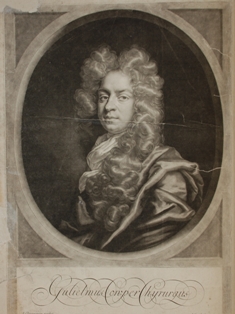
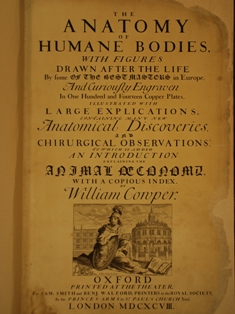
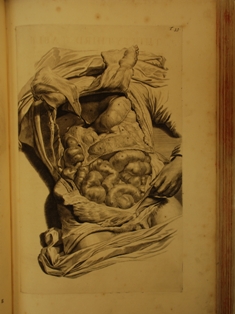

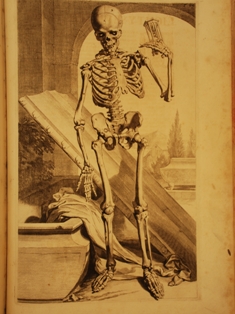
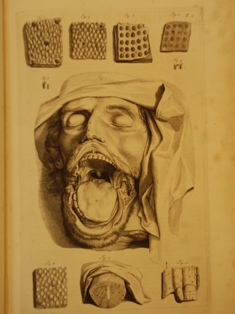
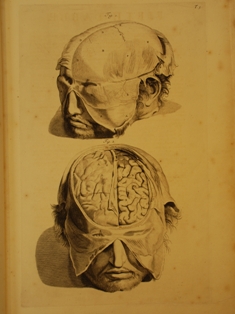
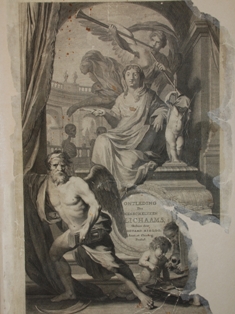
Connect with your library